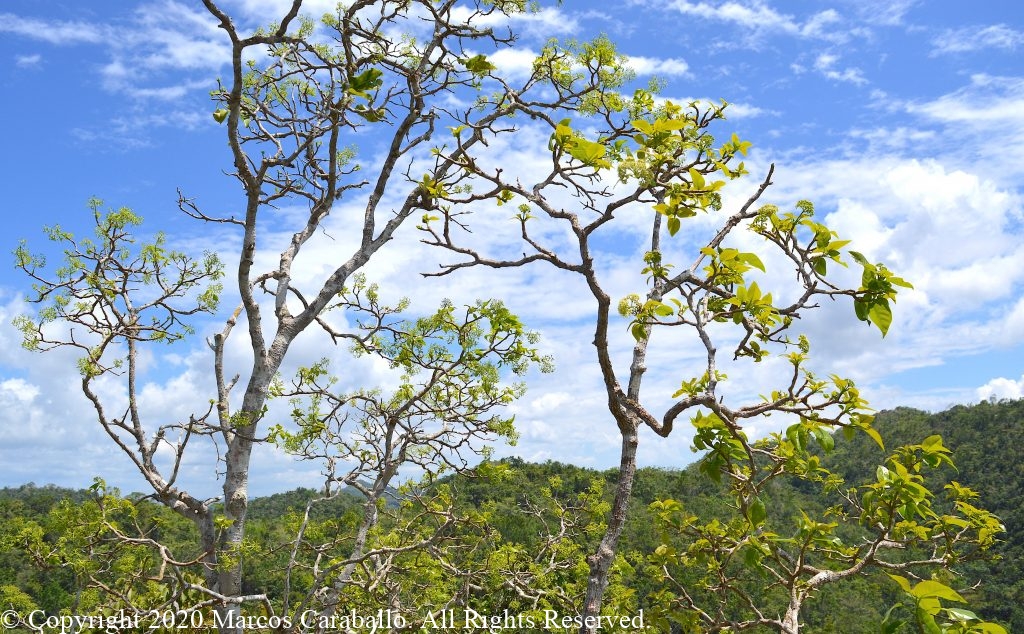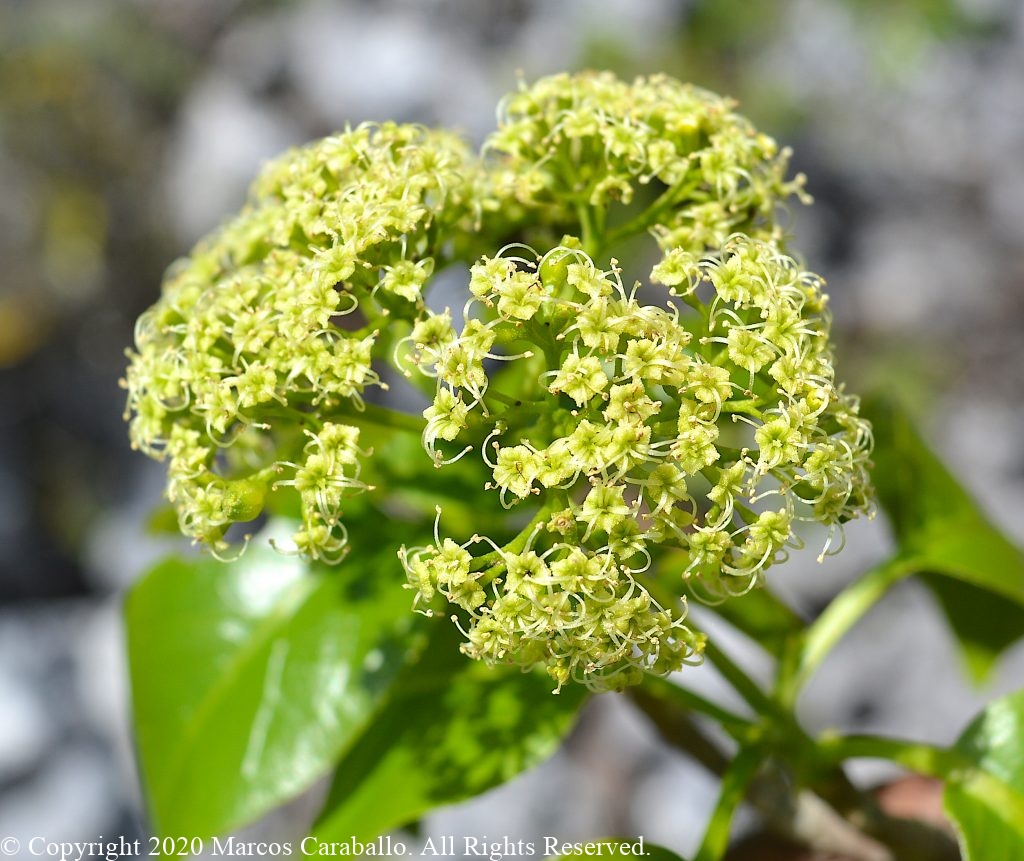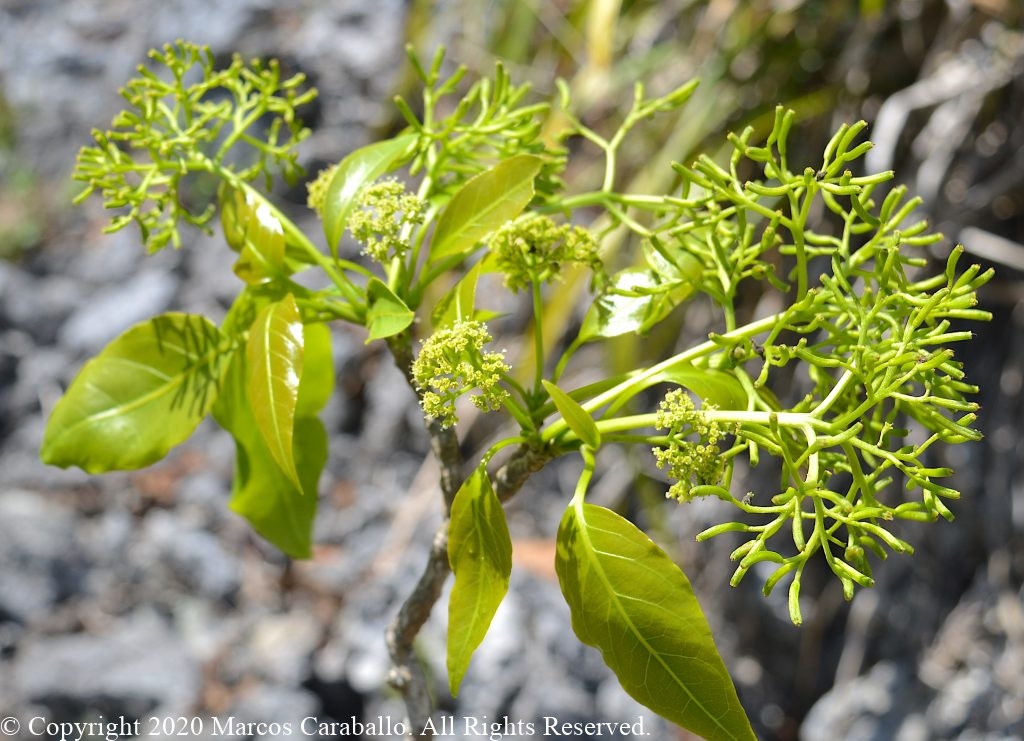By Marcos Caraballo-Ortiz, Keron Campbell, and Sashalee Cross
The diverse Caribbean islands are now home to a new species of tree. In Jamaica, botanists have described a new species of Pisonia, a genus better known as “birdcatcher” trees.
This new species, named Pisonia jamaicensis and published in the Journal of Plant Taxonomy and Geography (Webbia), only grows in the central and western mountains of Jamaica. Unlike other members of the genus, the tree is uncommon and even endangered at some localities.

Tree of Pisonia jamaicensis growing on the summit of a limestone hill in Jericho, St. James Parish, Jamaica. Photo credit: K. Campbell.
This species adds to the rich biodiversity of the island that records an endemism of over 30 percent with respect to seed plants.
Jamaica is located in a region that is a biodiversity hotspot, and even though the island has been botanized for centuries, this discovery indicates that there is work yet to be done.
Botanists who found this tree in past years confused it with other more common species, including the Water Mampoo (Pisonia subcordata) from the coasts of Puerto Rico and Lesser Antilles.
In early 2000’s, the prominent and expert botanist George Proctor recognized the distinctiveness of the new species and proposed naming it “Pisonia jamaicensis” in honor of its home island, Jamaica. However, Proctor never formalized the description, and the species remained hidden under incorrect names, and therefore, unknown to science until now.

Male (staminate) flowers of Pisonia jamaicensis. Photo credit: K. Campbell.
Now, a team of young botanists from the Caribbean completed the work and described the species, maintaining the name proposed by Proctor to recognize his contribution. The botanists are Marcos Caraballo-Ortiz from Puerto Rico (Botany Department, Smithsonian Institution), and Keron Campbell and Sashalee Cross from Jamaica (Natural History Museum of Jamaica, Institute of Jamaica).
Besides describing the new species, the botanists compiled a list of all currently known species of Pisonia worldwide, including their major and minor geographic distributions, and also built a taxonomic key to distinguish all kinds of birdcatcher trees reported for the Caribbean.
These resources intend to assist scientists around the globe to better understand the diversity of these interesting trees and to identify them, or at least narrow down possibilities when they encounter them out in the field.
The list of species was necessary because birdcatcher trees have been historically difficult to identify, and their taxonomy was complex because of the many fragmented taxonomic treatments dating back to more than a hundred years.
In fact, this is the first time in more than 50 years that a taxonomic key is built to separate all the Pisonia from the Caribbean, which is especially relevant because most species are found there. The taxonomic key is important because it aims to provide the first steps to develop further studies on the diversity and ecology of these interesting trees.
Regarding the infamous bird-dispersal mode for the Pisonia fruits –which can tangle birds and kill them by starvation–, researchers have not found evidence that the sticky fruits of the new species are affecting the populations of native birds.
Interestingly, this tree has fewer sticky glands than most other species, which seems to be more “friendly” to the wildlife by having fruits easier to remove.
Jamaica’s only other species, Pisonia aculeata is a straggling shrub with more sticky glands and is armed with curved spines from which it derived its local names Cockspur and Wait-a-bit, and consequently, can be considered less friendly. It is also more widespread throughout the island than Pisonia jamaicensis and found in secondary thickets and woodland margins, mostly on limestone.

Female (pistillate) flowers and fruits of Pisonia jamaicensis. Photo credit: K. Campbell.
The finding of a new species of tree is evidence that botanical studies in Jamaica are far to be complete and reflect the need to perform floristic studies at regional scales.
Endemic species such as Pisonia jamaicensis are a valuable national treasure, and efforts to understand more about their biology and grant them legal protection are critical to preserve their existence for future generations.
The complete scientific article is open access and can be viewed and downloaded from the website of the Journal of Plant Taxonomy and Geography (Webbia) at: https://oaj.fupress.net/index.php/webbia/article/view/10018/9339.
Full citation: Caraballo-Ortiz, M.A., Campbell, K.C.St.E. and Cross, S.J. 2021. A new Pisonia (Nyctaginaceae) from Jamaica, with an updated list of species in the genus and a key to the West Indian taxa. Journal of Plant Taxonomy and Geography (Webbia) 76(1): 53–63. doi: https://doi.org/10.36253/jopt-10018.
 Copyright protected by Digiprove © 2021 Marcos Caraballo
Copyright protected by Digiprove © 2021 Marcos Caraballo
0
0
votes
Article Rating